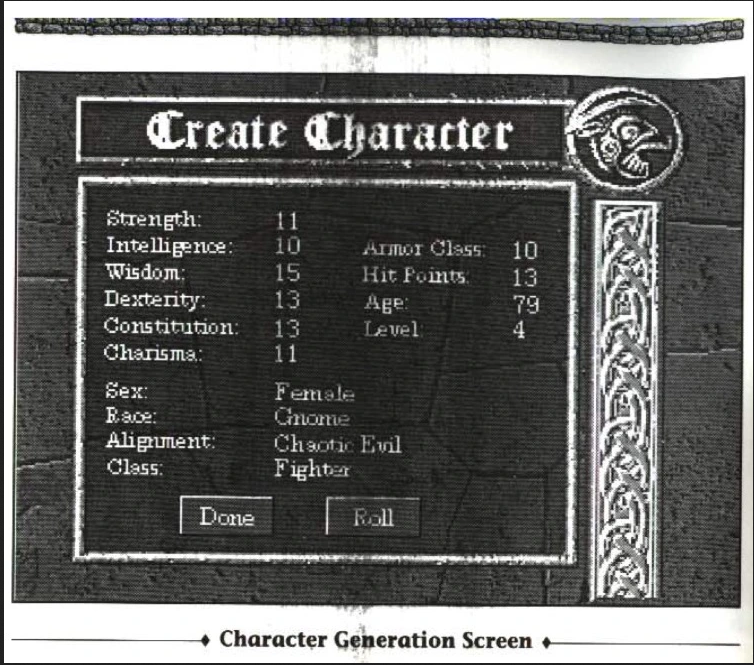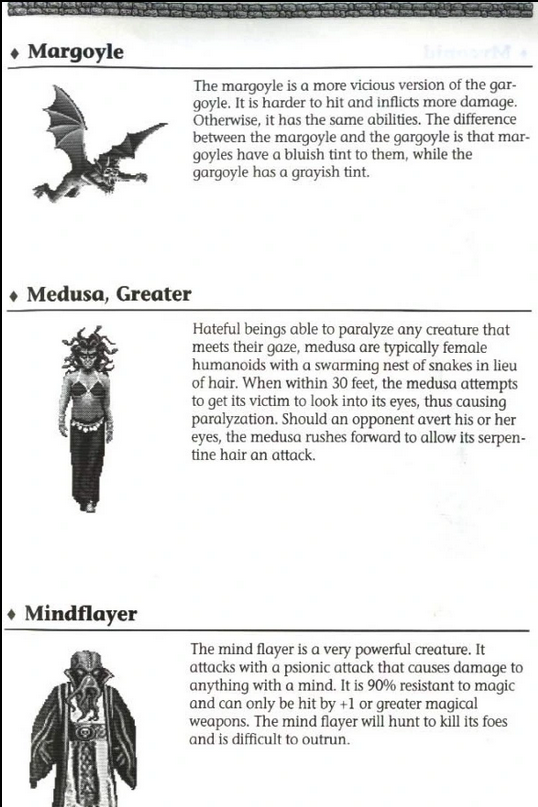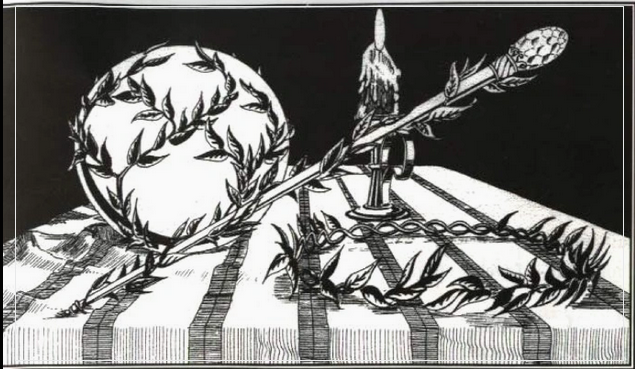When I play solo sessions of Basic Fantasy, my theater of the mind is almost entirely inspired by Slayer. Murky, gritty, simple and old school. The textures, the dimly lit marble walls adorned with gargoyles, the floor that becomes acid with one misplaced step, blood spattered wooden doors that lead to loot or encounters. Slayer is my primary visual reference point.
This is a game which blends the simplicity of a platformer and puts it into a complex D&D framework. Released exclusively to the 3DO console, Slayer was destined to obscurity along with the platform on which it was released. Why am I writing about this game here? For me, it is full of nostalgic appeal, as I owned a 3DO before I ever had a PSX. There is also the soundtrack, which features some particularly beautiful dungeon synth, adding massively to the games aesthetic appeal. Finally, the initial toughness makes this a fascinating game to crack.
So how does it work? First of all you are presented with premade characters, or the ability to generate your own adventurer. The ability to create characters is something any D&D game should provide as standard. Whilst some attributes, such as strength and intelligence make sense, I am entirely unsure of what difference charisma makes. There is no interaction with NPC's other than combat.

There is also the mysterious option to choose an alignment. In a basic hack and slash dungeon crawler, whether one is good or evil makes absolutely no difference to overall gameplay. When I first played Slayer I was overwhelmed by these attributes, numbers and the seemingly esoteric D&D terminology. It makes for an impressive looking game, and is true to the d&d character creation system. However, much of it is fluff and the game would be the same without it.
One of its major strengths, and something it offers which I judge any other D&D game by, is its variety of monsters. If in an entire game one encounters little more than dreary looking wolves and goblins, I tend to consider how much better it would have been if they had enough monsters to fill an entire bestiary, as is the case with Slayer.

The game comes with a booklet, which features some wonderful artwork and a guide to the d&d rules employed in the game, such as how armour class works. Towards the back is a catalogue of monsters which can be encountered, each with an image and a short profile. Encountering all of these monsters is impossible in one playthrough, however new dungeons can be generated and settings adjusted to make different enemies available.
One of the most enjoyable aspects of this game is 'collecting' the monsters. Tracking down and killing everything in the bestiary gives the game most of its replay value. Some enemies appear at higher levels on the highest difficulty setting, meaning you'll likely have completed the game once or twice before encountering them.
There is plenty of attention given to their design, from the rags or armour which they wear to their facial expressions as they come in for the kill. Some project missiles, most engage in close range melee attacks. There are 'crypt things' which surround the player and claw them to death, Wraiths who are held back by fire spells. There are, apparently Mindflayers, although I do not recall ever encountering one.
Playing it as a child I knew nothing about D&D and approached this game without any strategy to speak of. I was just intrigued by the murky, dark fantasy visuals and strange items which could be collected. Playing many years later as an adult, I can perhaps summarise how to beat this game in a paragraph or two. Although if you intend to play it, I'd advise working it out alone.
Once you have created a character and saved your game at any point, a new game can be started without that character losing any items or XP. Choose a high difficulty setting and kill everything on each level, until the game becomes too difficult to progress. Start the game again, accumulating more XP, repeating this process until you pass through every dungeon. If you do this, you have beat Slayer.
After two complete playthroughs, you will have a player who is unstoppable, owing to their high level and rare items which can be found on later levels. One game changer is the 'ring of sustenance'. Put it on a character and you'll have to pay next to no attention to feeding them rations.
The last dungeon on any playthrough features one huge monster. A fire elemental, or a giant skeleton creature. You know there's nothing more to do when you can take these beasts down with ease. Nothing other than starting the grind with a new character and learning some new spells.
There are some strategies to consider. When you level up, save your progress. It is possible to lose levels. If you are playing as a non-magical character, it is worth keeping hold of wands and orbs for enemies only effected by spells. Beyond that there is little more to say regarding game play.
Some enemies are tougher than others and require a higher level character to beat. Hags and will o wisps are particularly tough to deal with. You'll work out pretty quick when it's time to go back and rack up some XP.
The environments, whilst lacking any real variety, are pleasing enough to look at. There are dismal, straw coloured dungeons, others with a gothic cathedral type aesthetic. Traps include lava and poison on the floor, darts shooting from walls. There are pits but it is impossible to fall down them.
The soundtrack, whilst for the most part limited to a handful of dungeon synth loops, is beautiful to listen to. It is only a shame more songs were not created for individual dungeons. Owing perhaps to the games obscurity, I was unable to find any other projects belonging to the composer of Slayers soundtrack, no mention of him online. The songs are untitled, and can be found on YouTube, however. Even for people not interested in computer games, these songs are worth giving a listen.
Whilst Slayer would likely have made little impression as a PSX game, it was a big fish in a small pond on 3DO. Very few games were released exclusively to this console, even fewer good games. In any list of 3DO games worth owning, this will be up there. It's not a great game, it has its flaws and limitations, although it's charm and playability are sufficient enough to overcome these.
PSX in contrast had an abundance of bad games which were entirely overshadowed by phenomenally good games. The same console, for instance, bought us both Metal Gear Solid and the clunky, awkward film inspired 'City of Lost Children'. 3DO was 70% City of Lost Children, its good games moved to other consoles at the first opportunity.
There was a sequel, but it was such a dramatic departure from Slayer that it barely merits any mention. Whilst this sequel exists, no real continuation exists. This is a shame, as the faults of Slayer could have quite easily been rectified. Perhaps an animation to show swords striking enemies, or the addition of stairways on individual dungeon levels. Basic things which would have built on a working system.
I'll likely not revisit this game for a while, having finished it only recently. But no doubt, further down the line, it'll provide some nostalgic appeal once more and I'll see if there's anything new to be found in this game that I'm pretty sure I've explored to the fullest extent.
This game features maps which could perhaps be incorporated into a basic tabletop d&d campaign, focused on building up low level characters. Put a handful of malignant myconids into some chambers, traps in some directions, and places to rest. Maybe some nerd out there has attempted this at some point.
Slayer is an oddity from a strange time in video game history. PlayStation were on the verge of a complete takeover which would render the Panasonic 3DO obsolete. Great minds at 3DO would jump ship and join Sony to ensure their place in the future of the industry, promises made by developers to release games exclusive to 3DO were swiftly broken upon the release of PSX.
Slayer is a product of a flawed and doomed system, which remains beloved by many who remember it all the same. A reflection of its release platform, the faults of Slayer are apparent, in the great scheme of d&d games it is an underdog and an outlier. It may be these shortcomings that heighten our appreciation for these games many years on, those who do remember them form a sort of community, and share in a nostalgia unknown to most other gamers.
Slayer, for me, is the best game on 3DO, released only to 3DO. It is part of my childhood and has since intertwined with my present given my enjoyment of the 'Dungeon Synth' genre and European fantasy and mythology in later years. Simple, even primitive, I am lucky enough to have played this game as a child when it still had the capacity to mystify me and lose me with its reference to classes and character sheets unlike anything I'd seen before.
A few years later I'd discover FVII, this would be the foundation from which I'd learn the most essential principles of RPG gameplay, after much trial and error and experimentation. Downloading Slayer and running it on a 3DO emulator it presented little challenge to complete, although I uncovered more playing the game as an adult than I could as a child.



